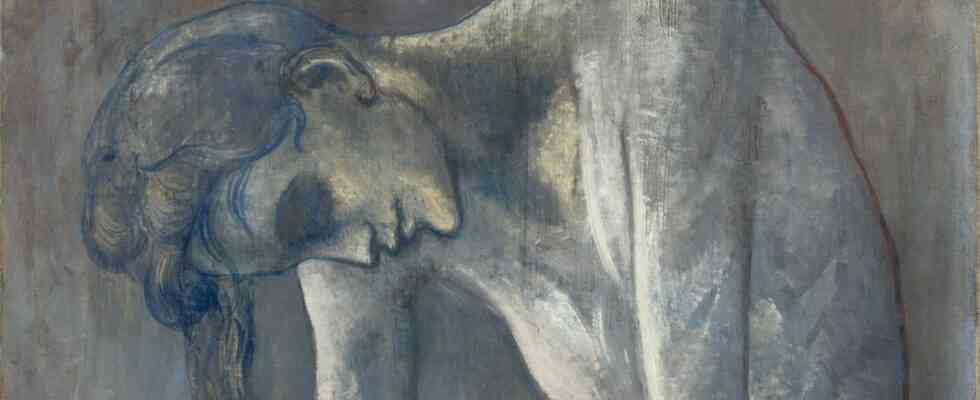litigation
Jewish couple sold Picasso paintings to flee Nazis – now their great-grandson wants them back
Pablo Picasso’s painting “La repasseuse” (in English: “Ironing Woman”) from 1904
© Kristopher McKay/ / Picture Alliance
In order to be able to afford to flee the Nazis in the Third Reich, a Jewish couple sold a painting by Pablo Picasso for just $1,552. Your descendants now want it back – and are complaining.
In 1933 the Nazis came to power in Germany – and with them came fear, death and terror. With the increasing persecution of Jewish fellow human beings, Karl and Rosi Adler also feared for their lives. In 1938, to flee the Nazis, they sold one of their most prized possessions: a painting by Pablo Picasso. The artwork “La repasseuse” (in English: “Ironing Woman”) was painted by the artist in 1904. Today it is worth about 100 to 200 million euros and is owned by the Solomon R. Guggenheim Museum in New York City, against which the descendants of the Adlers are now suing.
The Adlers had originally purchased the painting in 1916 from Heinrich Thannhauser, a Jewish gallery owner then living in Munich. When the couple later had to flee from the Nazis and from Germany, they needed short-term visas for other European countries that still seemed safe at the time. In order to be able to afford the visa costs, they sold the Picasso painting back to Thannhauser’s son Justin. Justin Thannhauser had already left the country and was living in Paris. The Adlers sold him the painting for about $1,552, which would be around $32,700 today.
Descendants of the Adlers are suing the Guggenheim Museum
The selling price of the Adlers is said to have been well below the market value of the painting. This emerges from a lawsuit filed in a New York court last week. Just six years before it was sold to Justin Thannhauser, the Adlers had been offered around $14,000 for the painting. But the couple decided against it. Justin Thannhauser had the painting insured for $20,000 shortly after purchasing it. When he died, he bequeathed his extensive art collection, including the “Ironing Woman” to the Guggenheim Museum.
“Adler would not have sold the painting at this time and at this price if he and his family had not been and would not be persecuted by the Nazis,” lawyers for the Adler heirs write in the lawsuitand reclaim the painting from the museum. Several Jewish organizations and non-profit organizations are also named as joint plaintiffs in the lawsuit.
Museum finds lawsuit “unfounded”
The museum had already been researching the provenance of the Picasso artwork before his death. To confirm the provenance of the painting, the Guggenheim contacted Eric Adler, son of Karl and Rosi. The museum told the BBC. Eric Adler “confirmed his father’s ownership and raised no concerns about the painting or its sale to Justin Thannhauser,” according to the museum. It is also said to have repeatedly acknowledged the Adlers’ prior ownership.
Since then, the painting has been in the Guggenheim Museum’s possession, which the Adler’s descendants had not contested for decades. That all changed in 2014, when one of the Adlers’ great-grandchildren found out about his family’s history with the painting. Since then, his lawyers and the Guggenheim have been at odds over who actually owns the painting. Now a New York court is to decide.
The Guggenheim told the BBC it “takes provenance issues and restitution claims very seriously” but believes the lawsuit is “unfounded”.

Washington Declaration on Dealing with Nazi Looted Goods
In 1998, 44 states signed the Washington Declaration. This stipulated that collections and holdings should be checked for Nazi-looted items. Objects to which this applied should be returned to the victims or heirs. Alternatively, a fair solution should be sought together.
According to the Guggenheim Museum, the “Ironing Woman” is not such a work of art. After all, the Adlers did not sell the picture in Germany, but only after they had left the country. Also, it was sold to a Jewish art collector and not a member of the Nazi party, according to the museum.
Sources: BBC, “Daily Mail”


